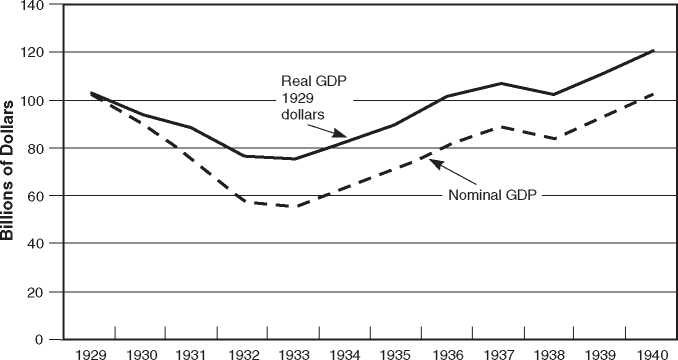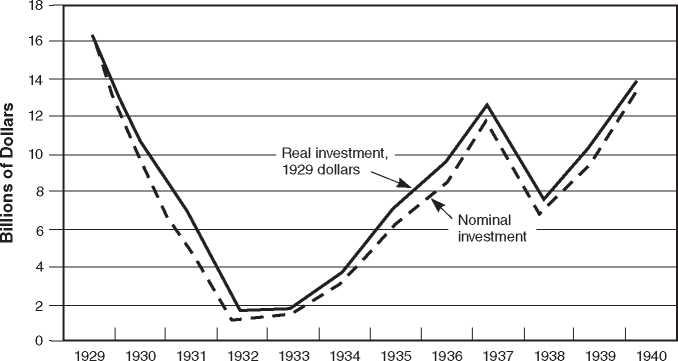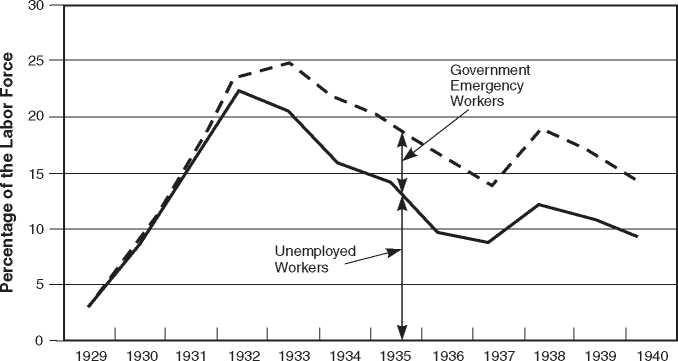It is utterly remarkable, even in hindsight, that an economic catastrophe of such magnitude could have occurred. In the four years from 1929 to 1933, the American economy simply disintegrated. The U. S. GDP in current prices declined 46 percent, from $104.4 billion to $56 billion. As shown in Figure 23.1, in constant (1929) prices, the decline was 27 percent. Industrial production declined by more than one-half, and gross investment, as indicated in Figure 23.2, came to a halt. By 1933, gross investment was below levels of capital depreciation. The nation’s capital stock was actually declining. In the
FIGURE 23.1
Gross Domestic Product, 1929-1940

Source: U. S. Bureau of Economic Analysis.
FIGURE 23.2
Gross Private Domestic Investment, 1929-1940

Source: U. S. Bureau of Economic Analysis.
Process, wholesale prices dropped one-third and consumer prices one-quarter. At the trough of the depression in March 1933, output of durables had fallen 80 percent; nondurables had fallen 30 percent.
The most horrible statistics were those for unemployment. Figure 23.3 graphically illustrates how unemployment soared. The number of unemployed rose from 1.5 million to 11.5 million. In 1933, the worst year, one-quarter of the civilian workforce was unemployed or had to get by on emergency “make work” jobs created by the federal government. Many of those employed were working fewer hours. Fully half of the nation’s breadwinners were either out of work or in seriously reduced circumstances. There were fewer two-earner families and no unemployment insurance to cushion the blow.
The intensity of the Great Depression was agonizing, and its seeming endlessness brought frustration and despair. The depression of 1920 and 1921 had been sharp and nasty, with a decline in durable-goods output of 43 percent, but it had behaved as a depression should, coming and going quickly. In the Great Depression, on the other hand,
FIGURE 23.3
Percentage of the Labor Force Unemployed, 1920-1940

Source: Michael Darby, “Three and a Half Million U. S. Employees Have Been Mislaid: Or an Explanation of Unemployment, 1934-41,” Journal of Political Economy 84 (1976): 7, 8. Reprinted by permission of the University of Chicago Press.
Durable-goods production did not regain the 1929 peak until August 1940, more than 11 years after the beginning of the depression. Unemployment, as shown in Figure 23.3, remained stubbornly high a decade after the depression began.
It is difficult to overemphasize the deep imprint registered by the duration and depth of the collapse. The revolutionary impact—economically, politically, socially, and psychologically—of the events of that fateful decade was matched only by those of the Civil War.




 World History
World History









